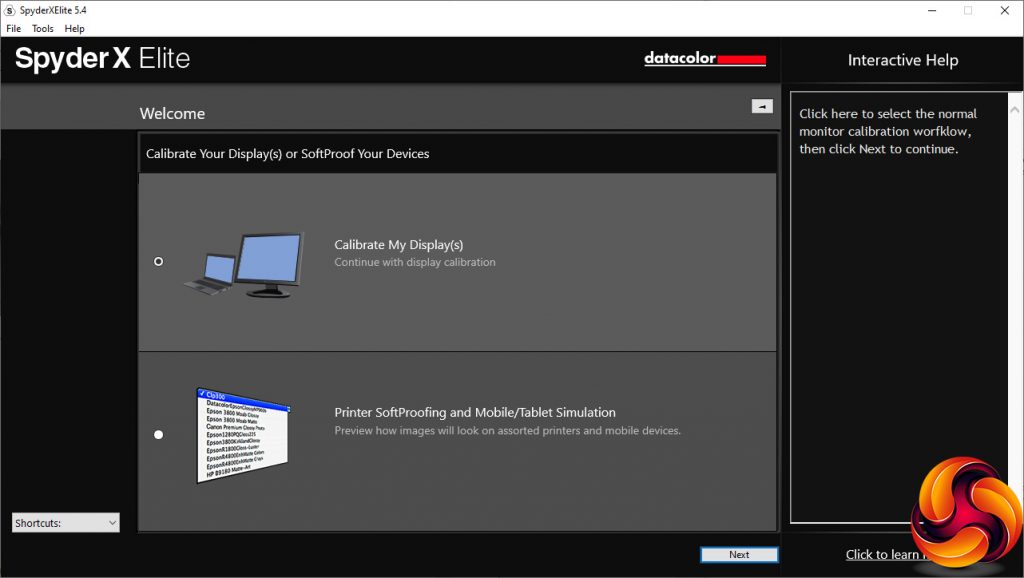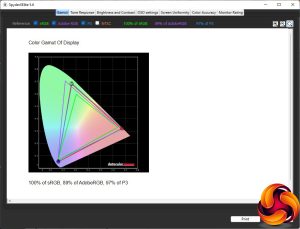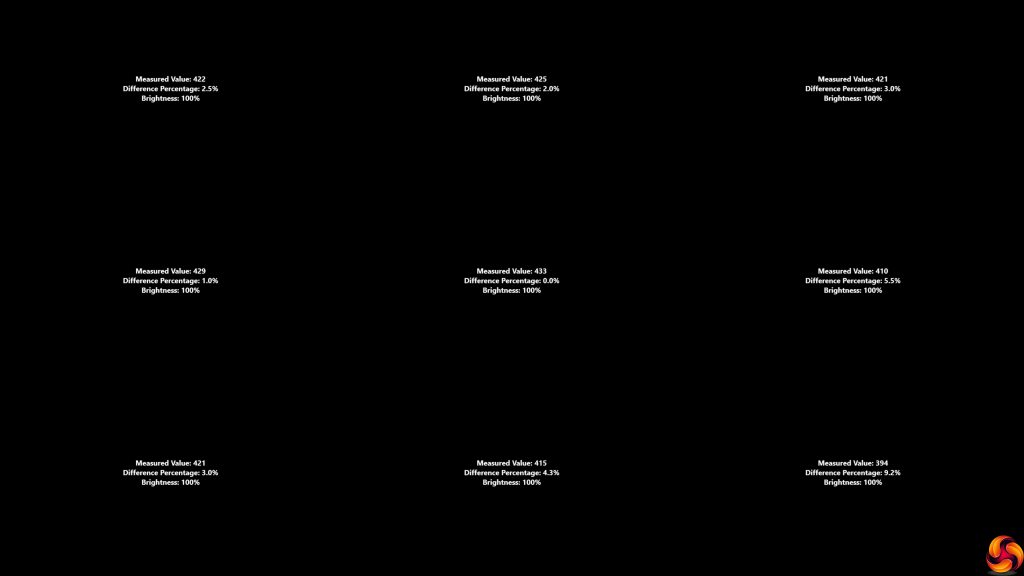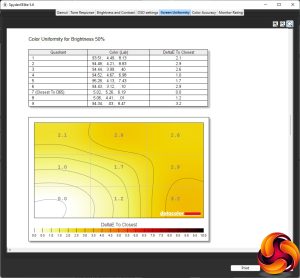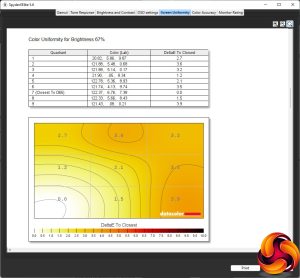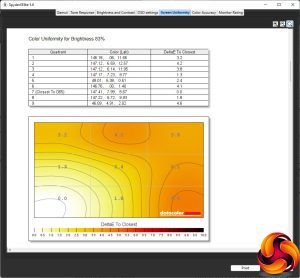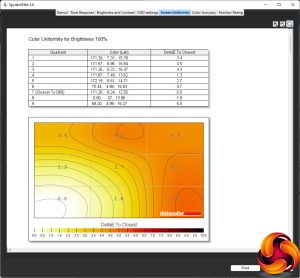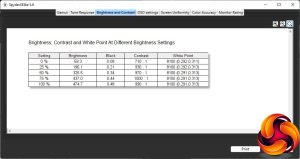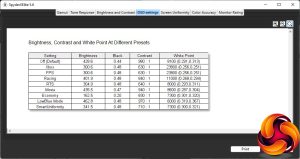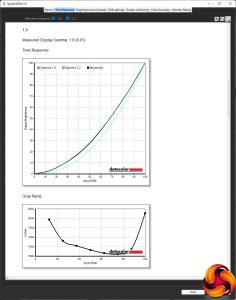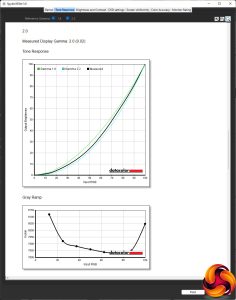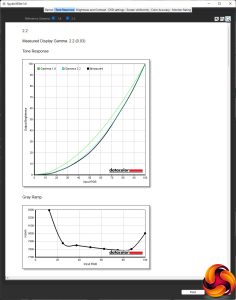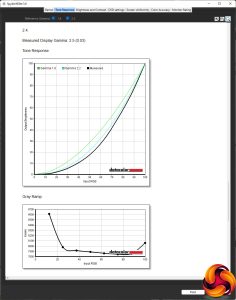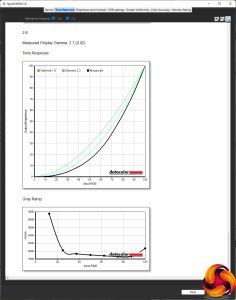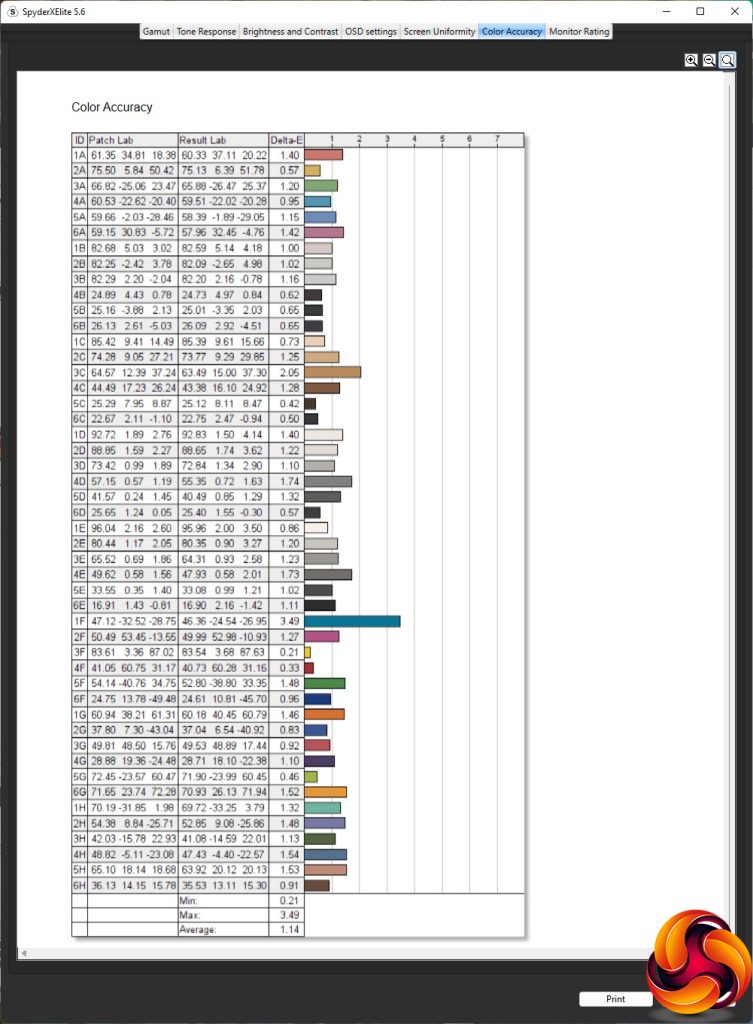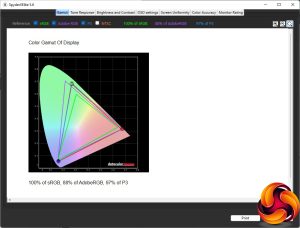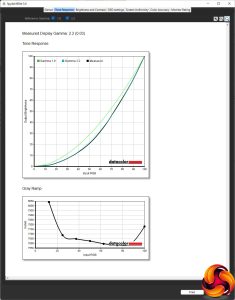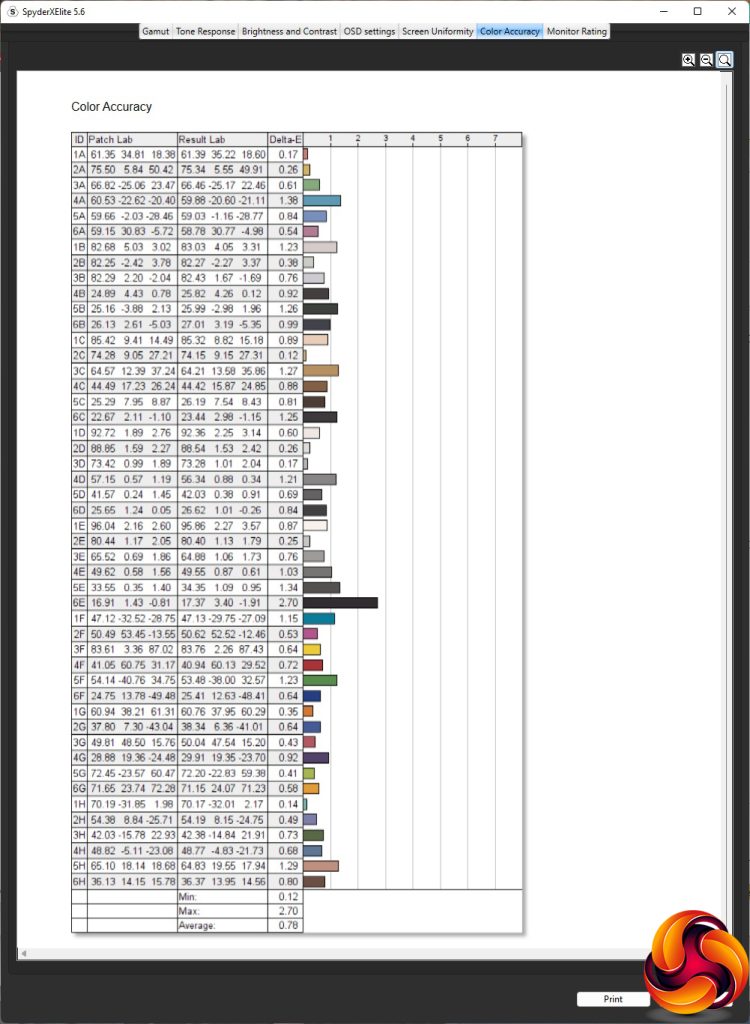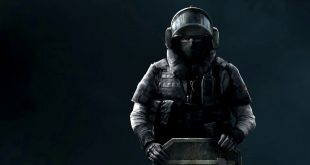Our main test involves using a DataColor SpyderX Colorimeter to assess a display’s image quality. The device sits on top of the screen while the software generates colour tones and patterns, which it compares against predetermined values to work out how accurate the screen is.
The results show –
- A monitor’s maximum brightness in candelas or cd/m2 at various levels set in the OSD.
- A monitor’s contrast ratio at various brightness levels in the OSD.
- The brightness deviation across the panel.
- The black and white points.
- The colour accuracy, expressed as a Delta E ratio, with a result under 3 being fine for normal use, and under 2 being great for colour-accurate design work.
- The exact gamma levels, with a comparison against preset settings in the OSD.
We first run this test with the display in its default, out-of-the-box state, with all settings on default. We then calibrate the screen using the Spyder software and run the test again.
We always test the display subjectively on the Windows desktop, using it for general tasks such as browsing and word processing, and with games as well, even if the display is not intended solely for that purpose.
We pay careful attention to any artefacts, ghosting or motion blur, and enable any gaming-specific features, such as adaptive-sync settings like G-Sync or FreeSync, using a compatible graphics card in our test PC.
We performed the quality tests on the Philips Momentum 279M1RV at its native 3,840 x 2,160 resolution in the default mode, after resetting the OSD, which sets the refresh to 120Hz. Our test system was equipped with an AMD Radeon Vega Frontier Edition graphics card, which supports FreeSync, but not G-sync, obviously, because it isn't made by NVIDIA.
The gamut of this screen is excellent. Unsurprisingly, the sRGB reading is 100 per cent, as with virtually ever screen we test. You're also getting 89 per cent of AdobeRGB and 97 per cent of the DCI-P3 colour space. So this screen can deliver a strong range of colour values.
Brightness uniformity is also excellent. No part of this screen diverges more than 10 per cent, and most areas are well under 5 per cent. This is a good sign of a high-quality panel.
Colour uniformity isn't quite so impressive, although this is a bright screen and the aberration goes up as you close in on 100 per cent brightness, which you probably won't want to use regularly anyway, unless you have a vendetta against your own retinas.
Although this panel is rated at 450cd/m2, we measured 474.7cd/m2 at 100 per cent brightness, with maximum contrast of 1,000:1 at 75 per cent brightness. IPS panel technology doesn't offer the native contrast of VA. The white point is rock solid at 8100K all the way through the range, but while it is consistent, it is also fairly cooly compared to the 6500K standard.
There are a few surprises when it comes to the SmartImage presets. The default out-of-the-box Off mode equates to a brightness of 428.6cd/m2, a high 980:1 contrast (for IPS) and 8100K white point, which is also a little on the high side when this would normally be closer to 6500K. Note that this specifies a 75 per cent brightness level. The preset you won't find on many other Philips monitors is the Xbox-specific one. This drops the brightness down to 300.6cd/m2 and the contrast to 630:1, but the white point is lifted to an incredible 23800K, which means more blue and less red. The FPS preset has exactly the same values.
The Racing preset, however, is brighter at 401.9cd/m2, with a higher 840:1 contrast, and a lower 11000K white point, although that will still be rather blue. The RTS options has similar brightness and contrast to Xbox and FPS – 304.9cd/m2 and 640:1 respectively. But the white point is closer to “normal” at 8000K. Movie mode cranks up the brightness a bit further to 435.5cd/m2, contrast near to maximum at 940:1, and a typical quite blue 8600K white point. Economy, on the other hand, drops brightness down to 162.5cd/m2, but keeps the contrast high at 830:1. The white point is a warmer 7300K.
Finally, LowBlue Mode has the highest brightness of 452.8cd/m2 and highest contrast of 970:1, but unsurprisingly drops the blues to provide a warmer 6000K white point. SmartUniformity has a mid-range brightness of 341.5cd/m2, a mid-range contrast of 710:1, and a reasonably warm 7300K white point. However, this does vary the white point across the screen, which this test doesn't measure.
Philips provides five Gamma presets with numerical names that mostly conform to their actual gamma values. The 1.8, 2.0 and 2.2 (default) values are all spot on. However, the 2.4 setting reads as 2.5, and 2.6 as 2.7. Still, that's close enough and you know what you're getting, making these gamma presets useful to have.
Since this is an IPS panel, albeit the Nano IPS variant, we would expect colour accuracy to be a strong point, and with a 1.14 average deviation it is. This is a very chromatically faithful monitor out of the box. But as always we wanted to see how good it could be if calibrated, so we fired up the SpyderX once more to make further adjustments.
After calibration, the Gamut has got imperceptibly worse. The sRGB score remained at 100 per cent, but AdobeRGB had fallen one per cent to 88 per cent, although P3 remained at 97 per cent. These are all still great numbers so there is nothing to be concerned about.
We only retested the default Gamma 2.2, because this usually doesn't change with calibration, and it hadn't – this came out bang on 2.2, as before.
Reassuringly, the average colour accuracy deviation had fallen to 0.78, which is one of the best scores we have seen. So this further underlines the quality of the panel used.
 KitGuru KitGuru.net – Tech News | Hardware News | Hardware Reviews | IOS | Mobile | Gaming | Graphics Cards
KitGuru KitGuru.net – Tech News | Hardware News | Hardware Reviews | IOS | Mobile | Gaming | Graphics Cards

